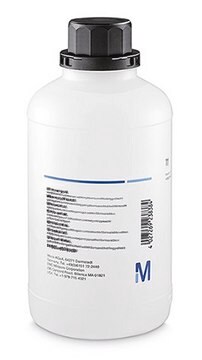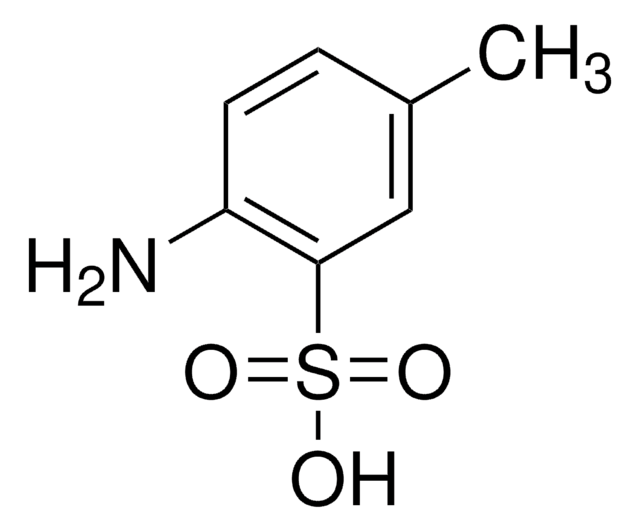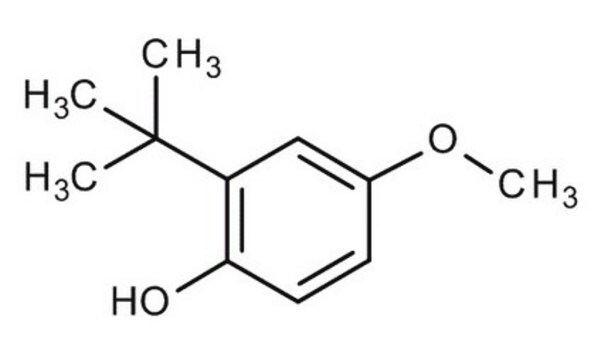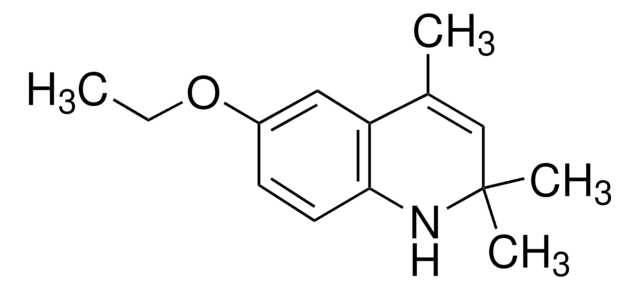B1212000
Butylhydroxyanisole
European Pharmacopoeia (EP) Reference Standard
Sinonimo/i:
Butylated hydroxyanisole, 2(3)-t-Butyl-4-hydroxyanisole, 2(3)-t-Butylhydroquinone monomethyl ether, BHA
About This Item
Prodotti consigliati
Grado
pharmaceutical primary standard
Densità del vapore
6.2 (vs air)
Famiglia di API
butylhydroxyanisole
Temp. autoaccensione
599 °F
Produttore/marchio commerciale
EDQM
Punto di fusione
58-60 °C (lit.)
applicazioni
cleaning products
cosmetics
food and beverages
personal care
pharmaceutical (small molecule)
Formato
neat
InChI
1S/C11H16O2/c1-11(2,3)9-7-8(13-4)5-6-10(9)12/h5-7,12H,1-4H3
MRBKEAMVRSLQPH-UHFFFAOYSA-N
Cerchi prodotti simili? Visita Guida al confronto tra prodotti
Descrizione generale
Applicazioni
Confezionamento
Altre note
Prodotti correlati
Indicazioni di pericolo
Consigli di prudenza
Classi di pericolo
Aquatic Chronic 2
Codice della classe di stoccaggio
11 - Combustible Solids
Classe di pericolosità dell'acqua (WGK)
WGK 2
Punto d’infiammabilità (°F)
241.9 °F - Pensky-Martens closed cup
Punto d’infiammabilità (°C)
116.6 °C - Pensky-Martens closed cup
Scegli una delle versioni più recenti:
Certificati d'analisi (COA)
Ci dispiace, ma al momento non ci sono COA disponibili online per questo prodotto.
Se ti serve aiuto, non esitare a contattarci Servizio Clienti
Possiedi già questo prodotto?
I documenti relativi ai prodotti acquistati recentemente sono disponibili nell’Archivio dei documenti.
I clienti hanno visto anche
Il team dei nostri ricercatori vanta grande esperienza in tutte le aree della ricerca quali Life Science, scienza dei materiali, sintesi chimica, cromatografia, discipline analitiche, ecc..
Contatta l'Assistenza Tecnica.








